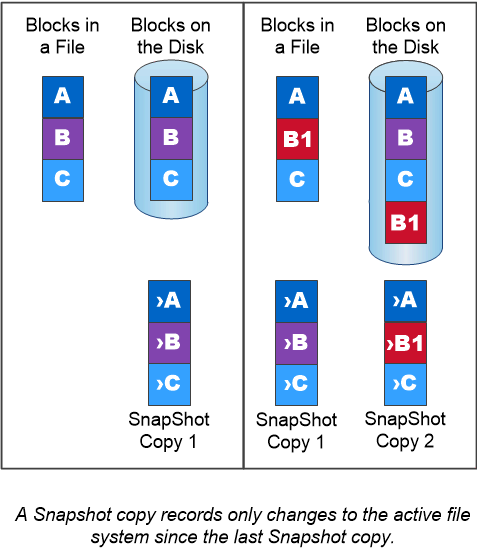Snapshots
 Suggest changes
Suggest changes


Traditionally, ONTAP replication technologies served the need for disaster recovery (DR) and data archiving. With the advent of cloud services, ONTAP replication has been adapted to data transfer between endpoints in the NetApp data fabric. The foundation for all these uses is ONTAP snapshot technology.
A snapshot (formerly Snapshot copy) is a read-only, point-in-time image of a volume. After a snapshot is created, the active file system and the snapshot point to the same disk blocks; therefore, the snapshot doesn't use extra disk space. Over time, the image consumes minimal storage space and incurs negligible performance overhead because it records only changes to files since the last snapshot was made.
Snapshots owe their efficiency to ONTAP's core storage virtualization technology, its Write Anywhere File Layout (WAFL). Like a database, WAFL uses metadata to point to actual data blocks on disk. But, unlike a database, WAFL does not overwrite existing blocks. It writes updated data to a new block and changes the metadata.
Snapshots are efficient because, rather copy data blocks, ONTAP references metadata when creating a snapshot. Doing so eliminates both the "seek time" that other systems incur in locating the blocks to copy and the cost of making the copy itself.
You can use a snapshot to recover individual files or LUNs, or to restore the entire contents of a volume. ONTAP compares pointer information in the snapshot with data on disk to reconstruct the missing or damaged object, without downtime or a significant performance cost.
A snapshot policy defines how the system creates snapshots of volumes. The policy specifies when to create the snapshots, how many copies to retain, how to name them, and how to label them for replication. For example, a system might create one snapshot every day at 12:10 a.m., retain the two most recent copies, name them “daily” (appended with a timestamp), and label them “daily” for replication.



